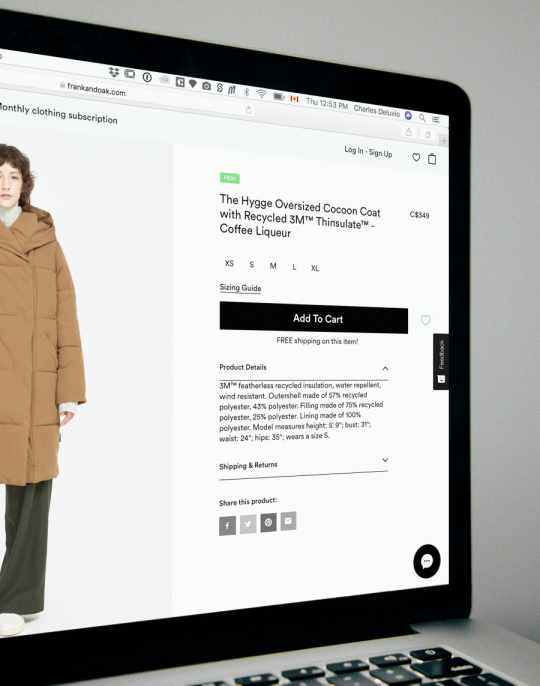During the latter part of 2020, we published a series of posts on selling products using an online store. Primarily, we laid out a plan to source in bulk low-cost items from China, setting up an online store to sell them, and ways to drive traffic to the online store. Recently, I was asked my opinion on what is better to sell, niche products, or commoditized products?
Niche products
Niche products are products that serve a specific subset of customers that can be defined by their own unique needs, preferences, or identity that make them different from a larger customer segment. Selling niche products requires finding an underserved subset within a larger customer segment.
For example, you may have a market for shoes. A subset is women’s shoes but within that subset, there are many different, even small subsets or niche products. Shoes for plus-size women or shoes for nurses would be a niche market.
Nearly every market can be refined, or divided, according to the particular needs and preferences of its consumers. Some common ways to define a niche are based on:
- Price (luxury or discount)
- Demographics (gender, age, income level, education level)
- Level of quality (premium or economical)
- Geographics (residents of a certain country, state, city, or neighborhood)
Choosing to focus on a niche is a strategic business decision to better serve a certain customer base than larger competitors who target broader markets. As a result, niche products are some of the most popular items bought in small-scale online stores.
Niche products are made in small batch runs or on-demand. Some online stores that sell niche products rely on handmade and craftsman business models and are manufactured by the business itself rather than buying products from a manufacturer. However, many online stores that sell niche products have exclusive or semi-exclusive arrangements with small-scale overseas manufacturers as described in How to Find and Validate Quality Chinese Online Store Vendors.
On the downside, selling niche products often involves being at the leading edge of a trend. Products you think will sell well may not resonate with consumers as you anticipated. This means that you will have winner products whose margins will have to subsidize loser products that you will have to sell at discount to free up capital dedicated to inventory. Also, customer acquisition costs for niche products will require additional resources to help educate the consumer. Plus, when you have a niche-focused website, it will require higher advertising costs to draw visitors to your website.
On the plus side, the reason niche products can create success for an online store comes down to the fact that the online store is offering products that can truly resonate with a highly engaged, and highly-converting audience. With proper marketing, serving a niche segment with an online store can have higher margins and be very profitable. This is because you create or offer a product that solves an issue for a very passionate audience segment. Moreover, when you sell niche products on a niche-targeted website, you can often charge more for your products.
Commoditized Products
These are mass-market products and represent things that everybody needs. Commoditized products are often bought in large quantities with discounts based on the quantity you purchase from the manufacturer.
On the plus side, commoditized products do not require the seller to educate consumers on the features and benefits of the product since consumers are well acquainted with it. Moreover, commoditized products have existing high demand, so sellers are not required to speculate on trending products.
On the downside, commoditized products have low margins because sellers have lots of competition. The consumer has many other options than your store to make their purchase and buying decisions are often price-driven.
Therefore, to make money selling commoditized products with an online store requires sellers to negotiate the lowest possible costs for their products. Considering that your online store may be competing with larger competitors with much greater buying power, most small businesses will have a hard time competing with larger players and will need to do a much better job with the customer experience.
Most large online stores simply focus on being the lowest cost provider and fall short on customer service. Therefore, your superpower as a smaller online store is your ability to offer a much greater customer service.
Most large online stores simply rely on their website and textual product descriptions to get buyers to purchase their products. A few may use a chatbot to deliver a series of canned responses and some others may offer a customer service number to be called by the consumer, which often has long hold times or requires you to leave a number for a callback. Most large online stores are NOT customer-centric.
For a small business to compete selling commoditized products, it must create:
1. A much more personalized and responsive buying experience with live chat
As a small-scale online store, you can provide a much more personalized and responsive buying experience than your larger competitors by using a live chat product.
While there are many freemium and paid live chat applications out there, I personally use and recommend my clients consider the freemium live chat tool tawk.to to really engage with their online store visitors in real-time.
Most live chat tools like tawk.to have the ability to create triggers that will display popup messages connecting consumers with a live customer support person to address any question or concern that the consumer may have while visiting your online store. While many users may simply click on another store if they do not find the answers to their questions, interrupting the consumer before they have a chance to leave your store to see if you can help them will start a dialog and keep them engaged, preventing them from leaving and also creating a positive image of your business.
Most live chat programs allow you to create what tawk.to calls shortcuts. Shortcuts are pre-entered messages to some of the most common types of inquiries or concerns that consumers voice in chats, saving considerable time in responding to consumers in real-time. Tawk.to even allows you to use your mobile device to respond to consumers from anywhere at any time and, to set up hours of operation and use a routine to capture the user’s contact information and questions when you are offline, so you can respond later when you are available.
Another reason I often recommend tawk.to to my clients, who for the most part are small-scale lone-wolf online store owners, who don’t have time to run their online store and answer consumer questions 24/7, is that tawk.to can provide a professionally trained agent to answer chats from consumers for as little as $1.00 per hour. A small price to pay for a virtual answering service if you sell products all over the globe.
2. A more engaging buying experience
Rather than simply relying on consumers to read a product description or watch a promotional video and select the “Buy Now” button like your larger competitors, smaller online stores can do live stream events to sell products. Most small-scale online stores that sell commoditized products have a limited number of offerings that lend themselves to live stream shopping events, similar to a QVC broadcast, where a store owner or employee demonstrates the product, answers questions live, and where consumers can instantly click to make a purchase.
Live stream shopping is already a massive business in China where it is estimated at $63 billion. Thanks to COVID-19 lockdowns, live stream shopping is finally taking off in the U.S. as well. Online stores now have many platforms including Google, YouTube, Amazon, Instagram, and Facebook which all have live shopping offerings.
3. An unboxing wow experience when the consumer receives the product
Creating a wow moment for the consumer when they unbox their commoditized product will set your online store apart from many competitors. Creating an unboxing wow moment means including a somewhat unexpected item in the package. It could be as simple as a handwritten thank you note, custom packaging, a free extended warranty, or a coupon for their next purchase. The goal is to create a super positive buying experience that will supercharge your word-of-mouth marketing. Creating an unboxing wow moment is effective because it calls upon buyer psychology. When a buying experience meets our expectations, we rarely take any notice of the transaction. However, by adding little add-ons that exceed the customer’s expectations, the transaction will make their brains pay attention and remember their experience with your online store in a positive way, that they will be more likely to share with others, creating brand loyalty.
Will your online store focus on selling niche products or commoditized products?












